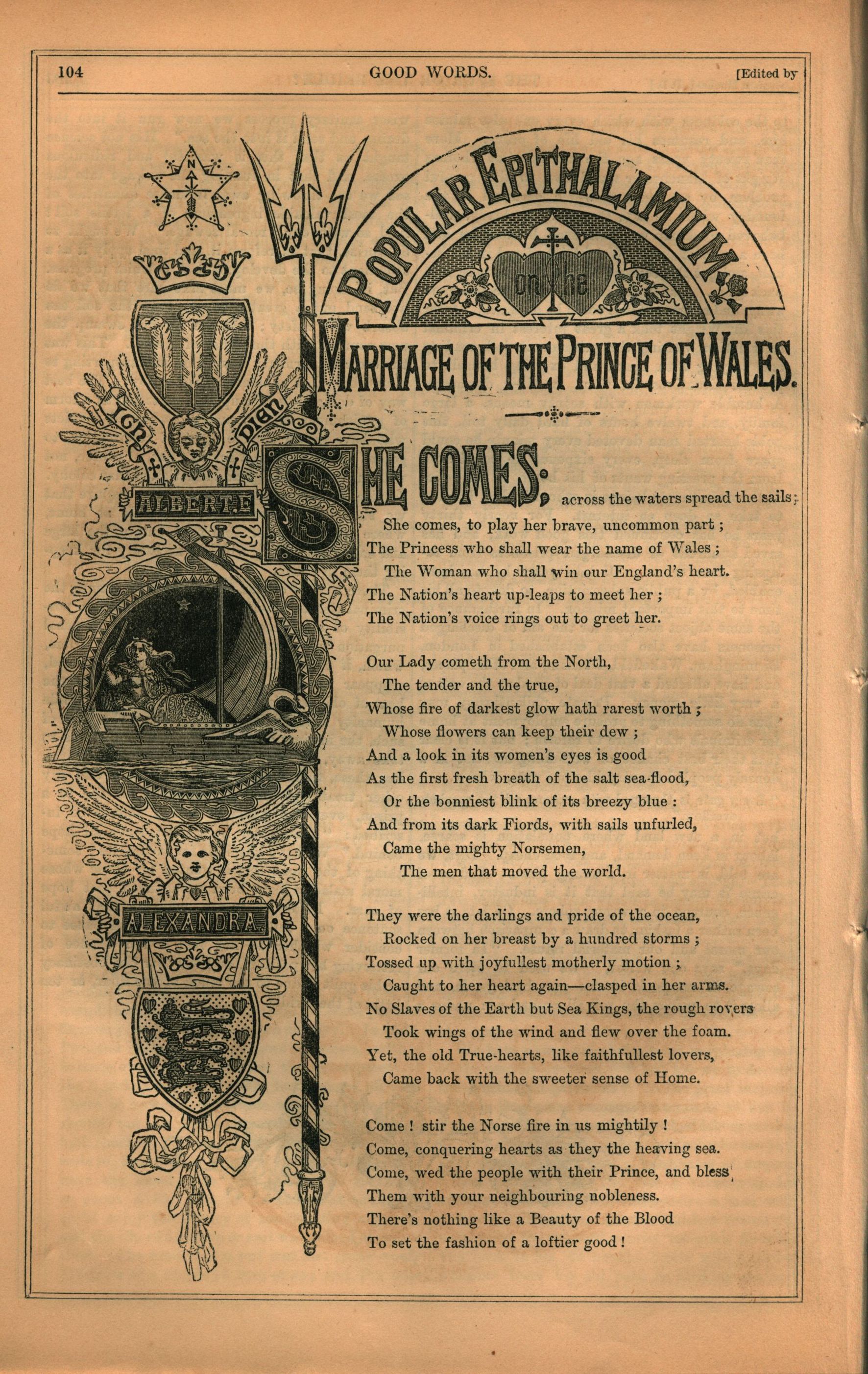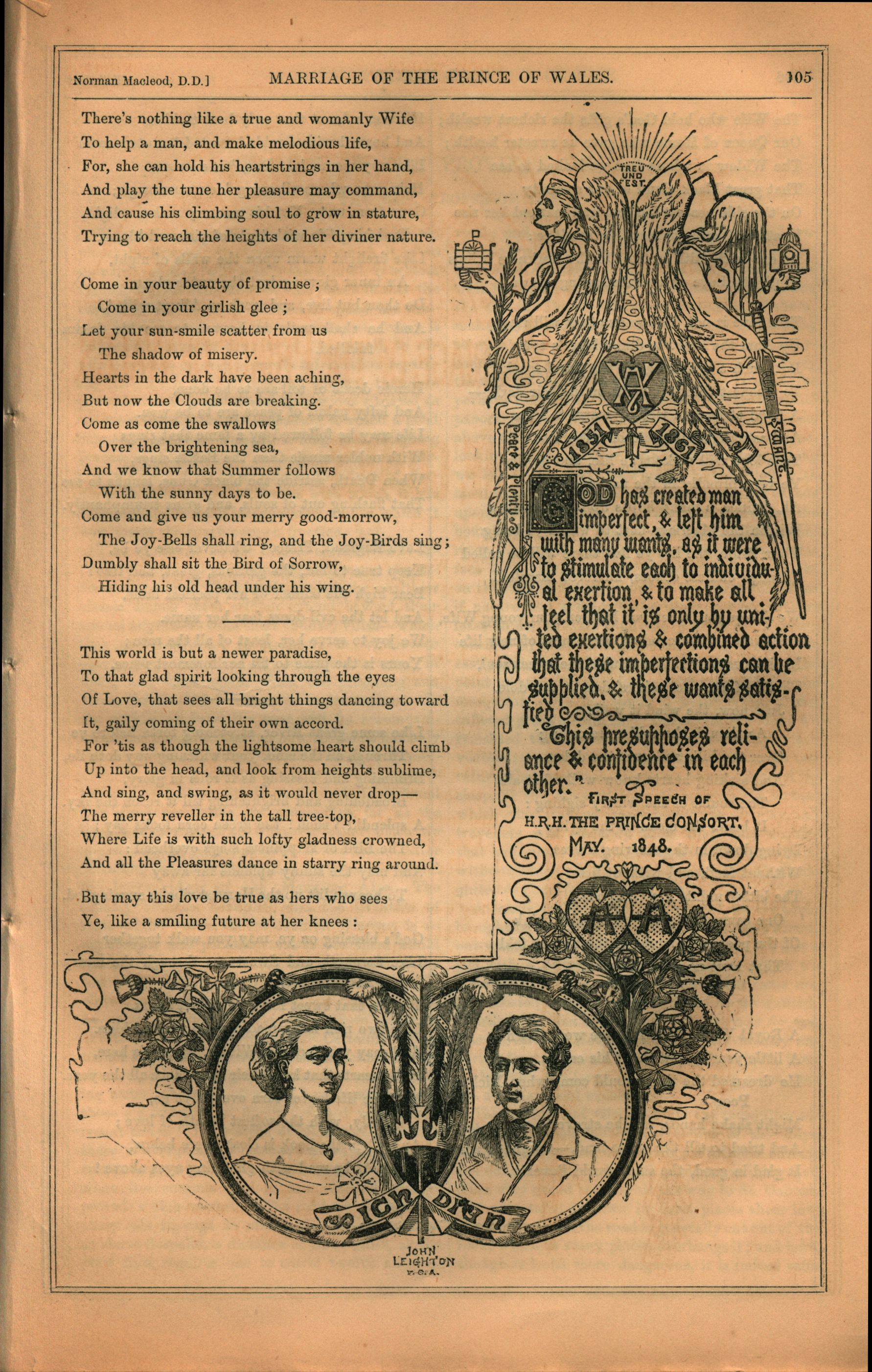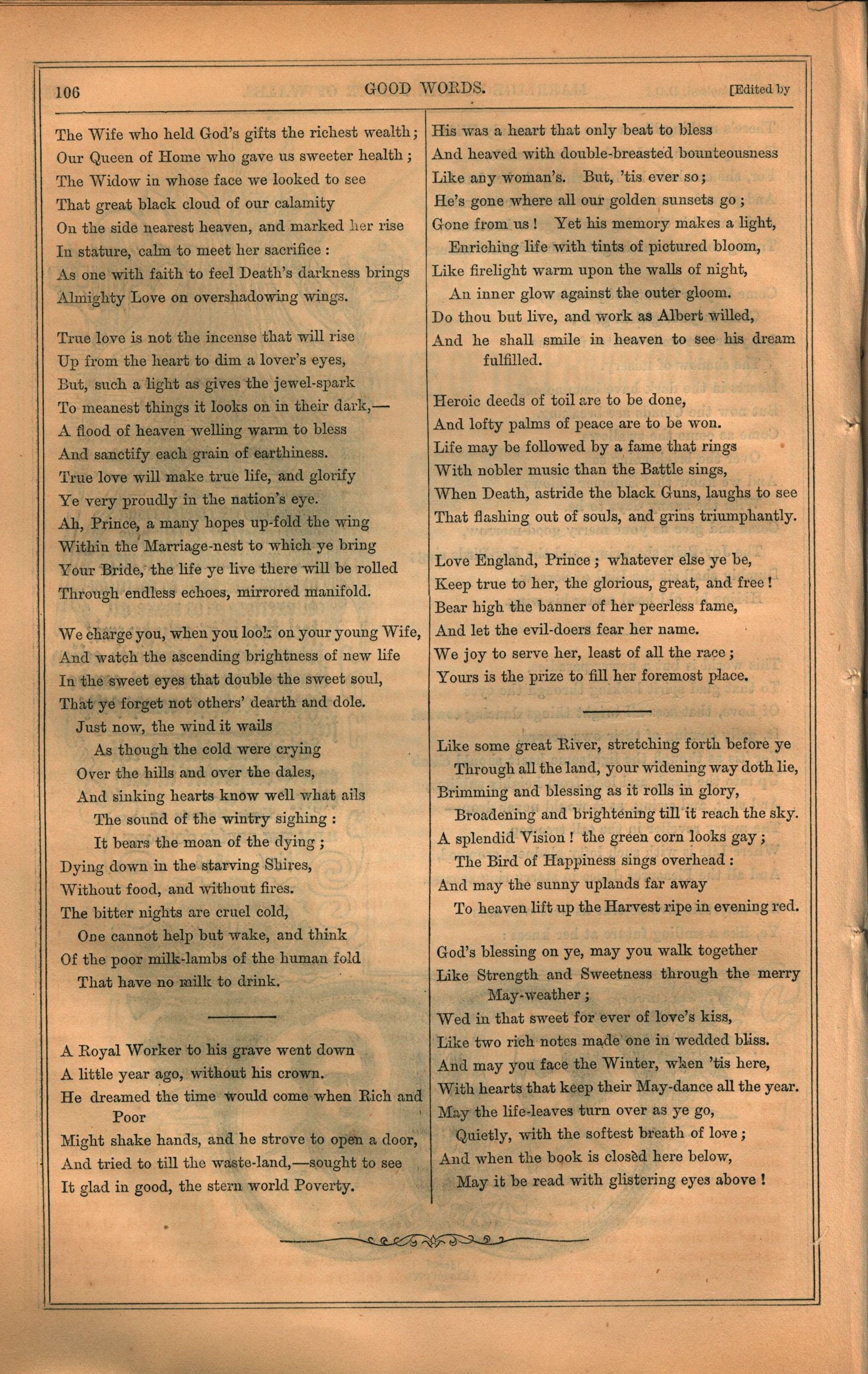Figure descriptions
Illustrated poem title in hand-drawn lettering. “POPULAR EPITHALAMIUM” is written
on a curved banner and is proceeded by a
small, decorative rose. The words “on the” appear in the space below: “on” and “he”
are both written on small hearts and a cross
between the hearts serves as the letter “t”. There are symmetrical floral arrangements
on either side of the hearts. The hearts, the
cross, and the flowers are all superimposed onto a white fleuron shape, which stands
before a brick wall. The remainder of the poem
title, “Marriage of the Prince of Wales”, appears below and is followed by a small
decorative milestone. The “M” in “Marriage” is
decorated with dots in a vegetal pattern. 1/4 page.
Multipart illustration descends the full length of the poem page, to the left of the
poem text. At the top, there is a
star-shaped compass with ten points. There is a small crown below the compass. Below
the crown, there is a crest with three
feathers. A winged cherub appears below the crest, holding a plate that reads “ALBERT.E”.
Ribbons extend from either side of the
plate, following the curve of the cherubs wings. The ribbon on the left reads “IGN”;
the ribbon on the right reads “DIEN”. There are
crosses on both ribbons. Next, there is a depiction of a classical warrior in a sail
boat. The bow of the boat is shaped like a
swan, and there is a heart on the sail. A single star shines in the sky. This image
is contained within a three-part, decorative,
circular border: the thick outer border is composed of waves. A winged cherub with
a heart-shaped necklace appears below the
circular border. The cherub holds a plate that reads “ALEXANDRA”. Ribbons extend from
the horizontal extremities of plate, and then
descend the page, ending in a tangled bow. There is a heart with the letter “L” contained
within the bow. There is a small crown
directly below the plate. Below the crown, there is a crest with three lions and eight
hearts. The crest is superimposed onto the
descending ribbons. 1/3 page.
Inhabited initial letter “S” from the poem’s first word, “SHE”. The poem’s first two
words, “SHE COMES;” are written in
enlarged hand-drawn lettering, but only the initial letter is inhabited. It is contained
within a double-ruled rectangular border
and inhabited by two creatures resembling dolphins. Behind the inhabited initial,
there is the striped handle of a sceptre. The
sceptre runs the whole length of the poem page, to the right of the previous illustration.
It ends in a point at the bottom and a
three-pronged fork at the top. 1/8 page.
Multipart illustration descends 2/3 of the length of the poem page, to the right of
the poem text. At the top, two bare
breasted angels pose back-to-back. The angel on the left side stands upright. She
holds a miniature building in her outstretched
right hand and a laurel branch in her left hand. She tucks a sceptre under her left
arms: two creatures with snakes’ bodies and
birds’ heads are wrapped around the sceptre. The angel on the right side is slumped
over; her hair hangs limp over her face. She
holds a miniature building in her outstretched left hand and a sword in her right
hand. “WAR” is engraved on the sword’s blade and
“WANT” is engraved on the sheath. The sun shines between the angels wings, encapsulating
the phrase “TREU UND FEST”. Below the
angels, there is a heart-shaped crest decorated with the intertwined letters “V” and
“A”. Below the crest, a ribbon is decorated
with the phrase, “Peach & Plenty”, and the dates “1850” and “1861”. An illustrated
caption appears below the ribbon in
hand-drawn Gothic lettering. The first word, “GOD”, is decorated and the initial letter
“G” is contained within a rectangular
border. The caption reads, “GOD has created man imperfect, & left him with many wants,
as it were to stimulate each to
individual exertion, & to make all feel that it is only by united exertions & combined
action that these imperfections can
be supplied, & these wants satisfied. This presupposes reliance & confidence in each
other.’ First Speech of H. R. H. THE
PRINCE CONSORT. May. 1848.” The caption is framed on three sides by curved and curly
lines.
A portrait of a woman (left) and a portrait of a man (right) are contained within
two overlapping circular frames. In the area
of overlap at the centre, three feathers ascend from the centre of a crown. Below
the crown, the phrase “∞ ICH DIEN” appears on a
curled banner. Flowers, fleurons, leaves, and foliates emerge from the top-left corner
of the frame on the left, and from the
top-right corner of the frame on the right. In the top right, a heart-shaped plate
emerges from among the vegetals. There are two
small hearts within the larger heart: they overlap at the centre and both contain
the letter “A”. There are curved and curly lines
adjacent to this illustration on both sides. 1/4 page.


